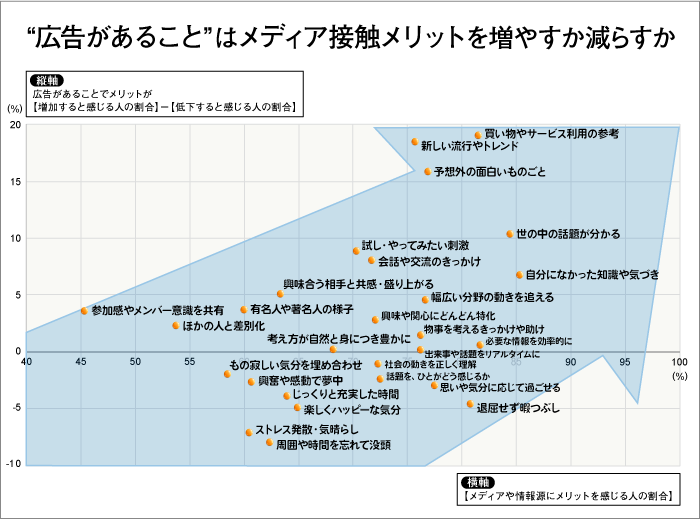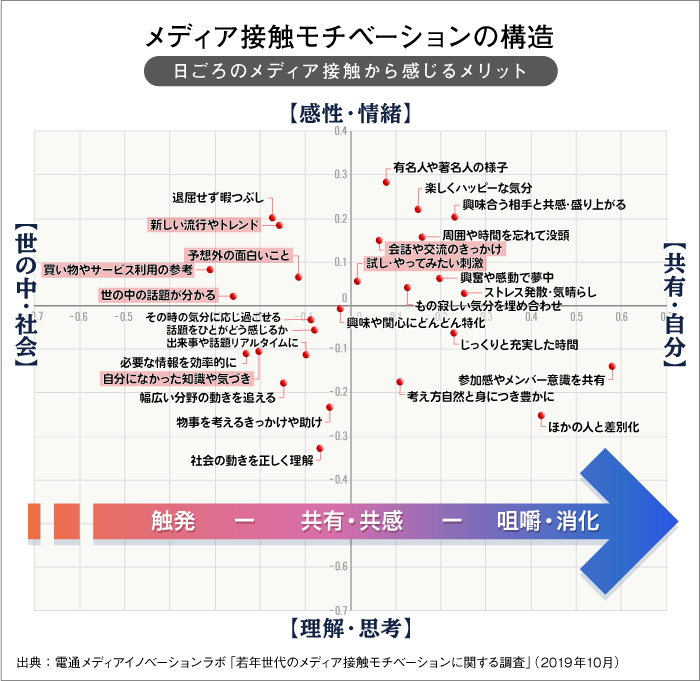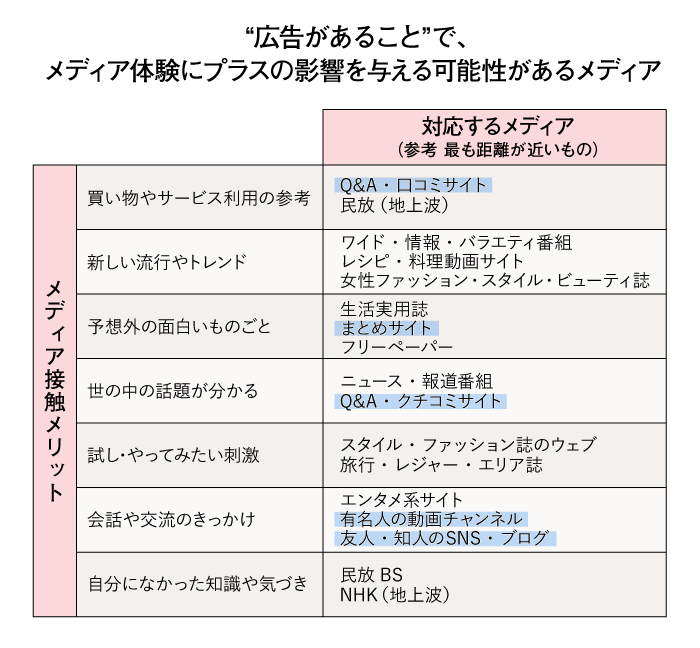The Relationship Between Media and Advertising: Exploring Its Future
This series, linked to the 'Information Media White Paper 2020 ', concludes with this installment. We now look ahead to the significance of advertising and advertising media for the younger generation.
In Part 4 of this series, we examined the structure of younger generations' motivations for media engagement. We found that online "purchase venues" like e-commerce sites simultaneously function as "media," occupying the position of "places for recognizing product information." Furthermore, social media served as a filter, aiding in the understanding and digestion of information from the wider world.
Traditional media like television have reached vast audiences by providing professionally produced content (programs, articles, etc.), sustaining their business through the advertising value generated by this reach. This synergy between professional content and advertising has enabled traditional media to serve as powerful initial points of product awareness.
But what about the younger generation(※)? As the habit of obtaining new product information through rapidly growing e-commerce sites and social media becomes widespread, the traditional link between media and advertising may be called into question. This time, we will consider this point.
※In this article, the younger generation is defined as ages 15-49, while the older generation is 50 and above. However, the 40s are considered a "bridge generation" between the two and are included in the survey sample. This aims to make the survey results easier to interpret clearly from the perspective of the older generation.
How does the presence of advertising affect the perceived benefits of media exposure?
How does the younger generation perceive the value of advertising in today's media environment? Here, we focus on the 27 items of "benefits" of media exposure covered in Part 4 of this series.
Please refer to Figure 1. The horizontal axis shows the percentage of respondents who "feel" each benefit (27 items) of media exposure. The vertical axis represents their evaluation of "when advertising is present." When the percentage of people who feel each benefit is set to 100%, the vertical axis shows the difference between the percentage who answered that the benefit "increases" and the percentage who answered that it "decreases" when advertising is present.
[Figure 1]

First, let's look at the overall graph without focusing on individual items. Along the horizontal axis, items with a higher percentage of people who feel the benefits of media exposure tend to have a higher percentage of people along the vertical axis who feel that "the presence of advertising increases the benefit" (indicated by the arrows in the graph).
In other words, the more people perceive a media experience as high-quality, the higher their tolerance tends to be for the presence of advertising. This aligns with the fundamental principle of the advertising business: "Advertising thrives only in high-quality media." This assessment of the relationship between media and advertising appears fundamentally unchanged even among younger generations.
Welcoming advertising as input from society
Next, let's examine individually along the vertical axis what kind of media contact experience increases tolerance for ads. There were seven items where the percentage of respondents who answered that the presence of ads "increases" benefits was more than 5% higher than those who answered it "decreases" benefits.
・"It helps when considering purchases or using services"
・"It helps me understand new fashions and trends"
・"Encountering unexpectedly interesting things"
・"It helps me understand what's trending in the world"
・"Provides inspiration to try things myself"
・"Provides conversation starters and opportunities to connect with friends and acquaintances"
・"Gain knowledge and insights you didn't have before"
The first two are media experiences directly related to consumption behavior, so naturally, advertising within them tends to be welcomed. Furthermore, when considering the remaining five media experiences as well, the above seven items seem to share some commonality.
Let's examine this using the graph introduced in Part 4. We can see that many of these seven items fall on the left side when viewed along the horizontal axis and on the upper side when viewed along the vertical axis (the seven items are marked in red).

This indicates that advertising is indeed welcomed by younger generations as it plays a role in providing "sensory media experiences that serve as input from the world and society."
Social Media Advertising with High Acceptance Among Younger Generations
From the perspective of older generations, the experiential domain of "sensory media experiences that serve as input from society" has historically been overwhelmingly dominated by traditional media, primarily television. But what about the younger generation?
The following chart shows the media experiences (7 items) where benefits increase due to the presence of advertising, along with the media considered to be particularly strongly associated with those experiences ( see Chart 2 in Part 4 for details ).
[Figure 2]

The media listed on the right side of the table are not necessarily actual advertising media (e.g., NHK [terrestrial broadcast] in the bottom row is a non-advertising medium).
This chart prominently features television, TV programs, and magazine media—platforms long relied upon by older generations. From a media business perspective, this suggests that traditional media still have significant potential to reach younger demographics, who were previously hard to reach through conventional channels. By leveraging the internet more effectively, traditional media can deliver content and advertising together to this audience.
However, simultaneously, the same table also shows
"Q&A/Review Sites"
"Aggregator sites"
"Celebrity video channels"
"Friends' and Acquaintances' SNS/Blogs"
(media marked in light blue in the table). Thus, for the younger generation, the spaces where they can tolerate advertising extend beyond the traditional categories and scope of media, encompassing social media as well.
For the younger generation themselves, social media is less a place that indirectly reflects the world and society and more a place experienced as the world and society "itself." Considering advertising as part of this, there is no significant difference compared to the role advertising on traditional media played for older generations. However, based on our analysis so far, we can infer that for the younger generation, the acceptability of ads on social media is likely determined more by how well they are crafted as "experiences to feel" than as "information to recognize."
From Part 4 through the final installment, we delved into the younger generation's perceptions of media, society, and advertising at the level of "consciousness." Tracing this path has made the underlying principles of their behavior seem more transparent.
The opening feature of the 'Information Media White Paper 2020' includes analysis focusing not just on advertising, but on the essential role of media for the younger generation. I highly recommend it to anyone interested in envisioning the future of our media society.






